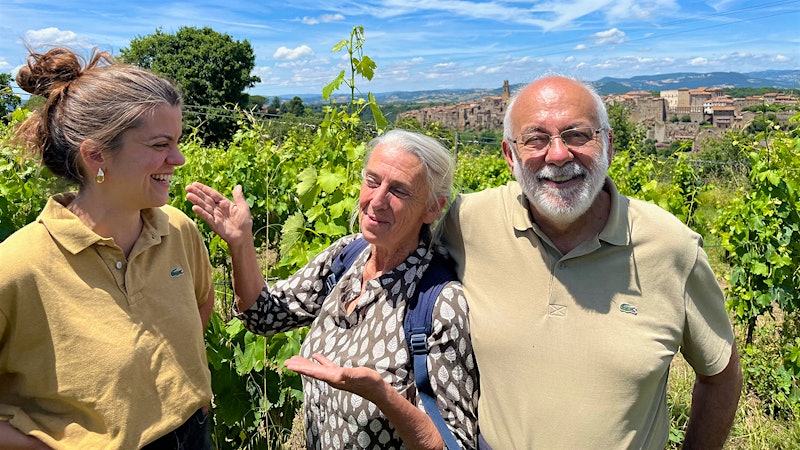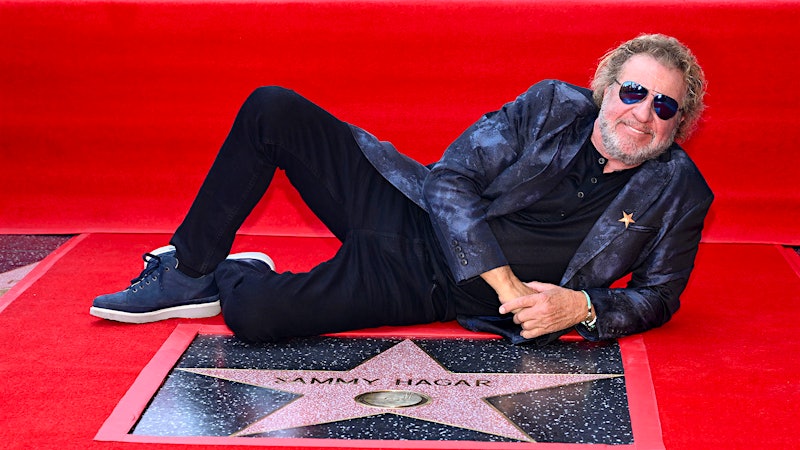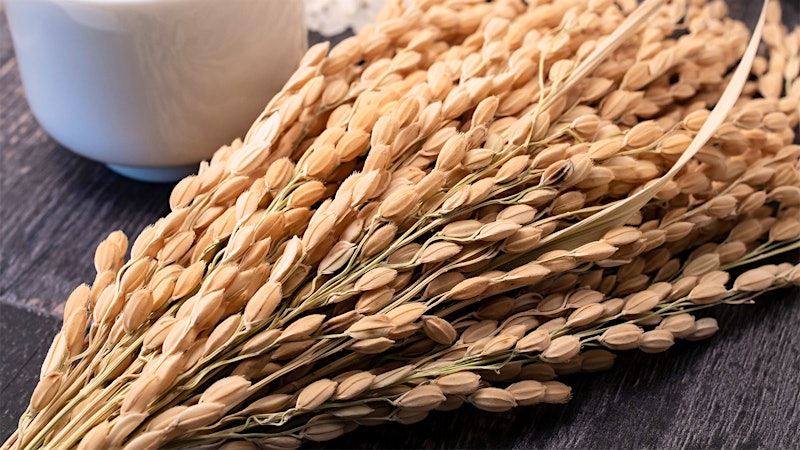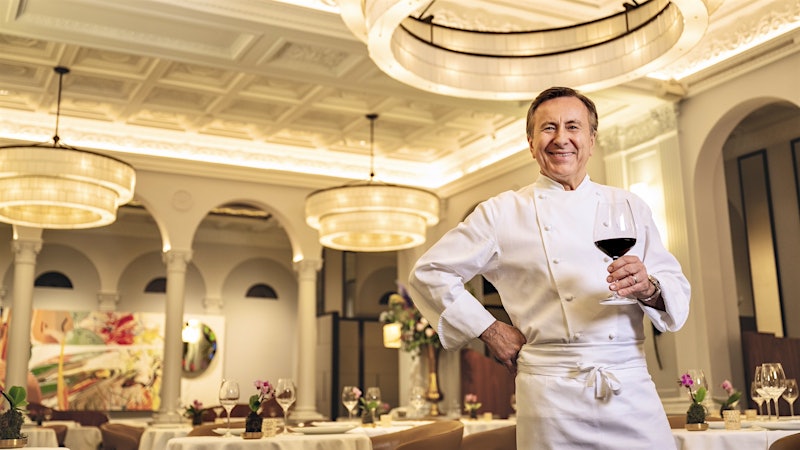Anatoly Korneev is a wine dealer at the epicenter of a precarious global wine trade.
At 55, he is a founding partner of the 30-year-old Simple Group, a leading Russian wine importer and retailer. He spends much of his time in Italy, which has been Russia’s main source of imported wines for decades.
Up until now, the flow of wines from Europe to Russia has been reliably strong—peaking at about $1 billion last year, according to European Commission statistics—even after Russia invaded Ukraine and the European Union imposed trade sanctions in response.
But in the current climate—with Moscow threatening new taxes and tariffs on the products of “unfriendly countries”—it’s uncertain how long the trade will last.
“Everything can change in one day,” says Korneev, who started Simple Group after he finished his university studies and worked as an agent for Chianti producer Ruffino in post-Soviet Russia. “Weird things have been happening for more than two years. The world became crazy. We are working in a foggy area.”

I met Korneev last week at the annual Vinitaly wine fair in Verona, where many attendees were concerned about geopolitical strains and the uncertainty over the global economy.
Over the course of several days, I spoke with Italian wine trade organizations, producer consortiums and individual winery owners about Russia.
Italy has been at the top of European wine exports to Russia. In 2023, it sent about $167 million (158 million euros) worth of wine to Russia, according to European Commission data assembled by the Unione Italiana Vini, Italy’s largest wine association, representing more than 760 companies and 85 percent of Italian wine exports.
That figure represents a nearly 8 percent drop from 2022. But when you add in exports to Latvia—a strategic European hub for shipments to Russia—the total value of the wines that ended up in Russia edged up slightly. Prosecco and other sparkling wines led the way.

Some Italian wine producers have cut off sales to Russia as a stand against the country’s aggression in Ukraine, which has been going on for more than two years now. But most wine brands that traditionally exported to Russia—including some prominent American-owned Italian wineries—are still in that market, either through direct exports or indirectly through third parties.
Why Are Russians Still Drinking So Much Italian Wine?
The vino continues to flow thanks to a massive exemption for most wine in the package of sanctions on luxury goods that the European Union placed on Russia in March 2022. Unlike American sanctions that forbid all exports of alcohol and tobacco to Russia, the European sanctions only kick in on bottles that cost at least 300 euros ($318)—affecting only the continent’s most elite wines.
“The great majority of wine is not affected,” says Nicola Marco Tinelli, head of Unione Italiana Vini’s political office. “The sanctions were set at the European level, and they try not to touch these products that are not politically sensitive.”
“Wine has not been a bargaining chip,” he says, adding, “We are aligned with our government and the European Union in supporting Ukraine in the war. It’s a worrying situation. Let’s see what will happen.”
Of course, even ultra-luxury wines still make it into Russia through nations like China, the United Arab Emirates and Turkey.
The idea of Russia importing relatively large amounts of wine during a war might seem counter-intuitive. Yet several wine producers who export to Russia explained that a ban on direct airline flights has made it more difficult for Russians to travel to Europe—therefore boosting wine sales.
“The middle class used to travel to Northern Italy on vacation to ski,” says Sandro Boscaini of Masi, which ships its wide range of wines—from Amarone to Prosecco—to Russia. “Now those who are staying home want to eat and drink better.”
“What happens tomorrow?” Boscaini asks. “We realize this is a country at risk.”

Perhaps even more shocking is that a similar story has unfolded in Ukraine, where, after a drop in wine imports in 2022, the market boomed in 2023.
“In Ukraine, away from the front in the cities, people try to live with normality,” says Luca Giavi director of the Prosecco DOC Consortium (Consorzio Tutela Prosecco DOC).
Sales to Ukraine—Prosecco’s 17th-largest market by volume—increased 83 percent in 2023. Meanwhile, in Russia, Prosecco’s number six market by volume, sales increased 5 percent last year, according to the Prosecco consortium.
What Might Put a Stopper in That Demand?
For now in the conflict, it seems that Vladimir Putin’s Russian government is the side that has Italian exporters on edge.
Last year, Russia increased tariffs on imported wines from “unfriendly countries”—including Europe and NATO members—from 12 percent to 20 percent.
Russia has been on a massive, decade long-campaign to grow (and subsidize) its domestic vineyards and wine industry, which is urging the government to raise those tariffs to a staggering 200 percent.
At the same time, Russia is expected to roll out more penalties for its opponents, including tripling its excise taxes on sparkling wines to the equivalent of about $1.50 per bottle. That’s a big blow to the bottom end of the market, which makes up most imports.
“If the taxes stay like that, consumption will go down,” says Filippo Polegato, CEO of Prosecco producer Astoria Wines, which produces 1.3 million cases of sparkling and still wines annually. He says that most exported Prosecco is sold at wholesale prices of less than $4 a bottle. “Consumers’ purchasing power goes down as taxes go up.”
Echoing that sentiment is Quirico Decordi of Vinicola Decordi, a massive Lombardy bottler of about 100 brands, ranging from sparkling wines to flavored wine beverages.
“Russia is an important market for basic wines, and the wines that will be hurt will be those basic wines,” he says, adding that any significant drop in European wines would likely be replaced by wines from South America.
Decordi says his brands work with 15 importers in Russia and 10 in Ukraine. “I have friends in Russia who pay in advance, and I love them,” he says. “I have friends in Ukraine who pay in advance, and I love them.”
“They are both my friends—but it’s not them making war against each other.”

At Vinitaly, Russian wine buyers and other trade professionals had a small presence, with about 300 registrants this year (down about 15 percent from 2022) in a crowd of more than 30,000 foreign professionals. Ukraine’s professional wine contingent was more than 200—down about 20 percent from two years ago.
Anatoly Korneev has a unique place among his compatriots. He and his business partner, Maxim Kashirin, have built Simple Group to include a chain of more than 100 stores across Russia, doing a significant business distributing to hotels, restaurants and private clients.
In 2014, the partners bought a prestigious vineyard in Chianti Classico to found their Bertinga estate in the village of Gaiole in Chianti. They have a top-notch winemaking team headed by France’s Stéphane Derenoncourt Consultants, and have been renting winery space at the stellar winery Istine. They export much of their 5,000-case production worldwide, including to the U.S., the rest of Europe and Russia.
As neither of these Russian citizens are on any sanctioned list, their work is all perfectly legit.
“The biggest shock for me in recent years was to lose some friends and relationships,” Korneev says, adding that he remains optimistic.
“Wine is a bridge. It should be a bridge between cultures,” he adds. “It is a versatile, generous and rich agricultural product. Despite the actions of world politicians, we have successfully engaged with others and promoted peace through our shared love for wine.”











